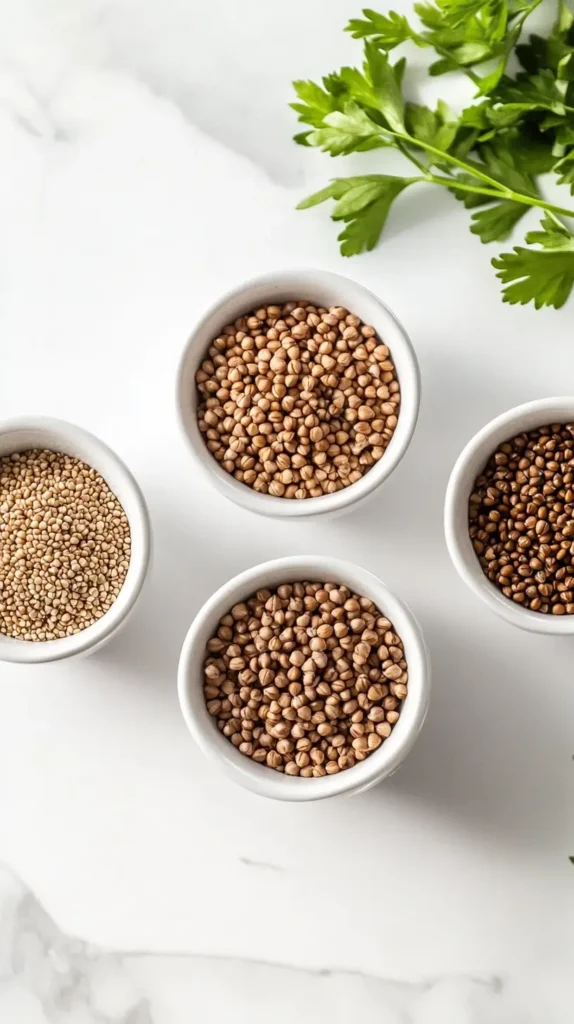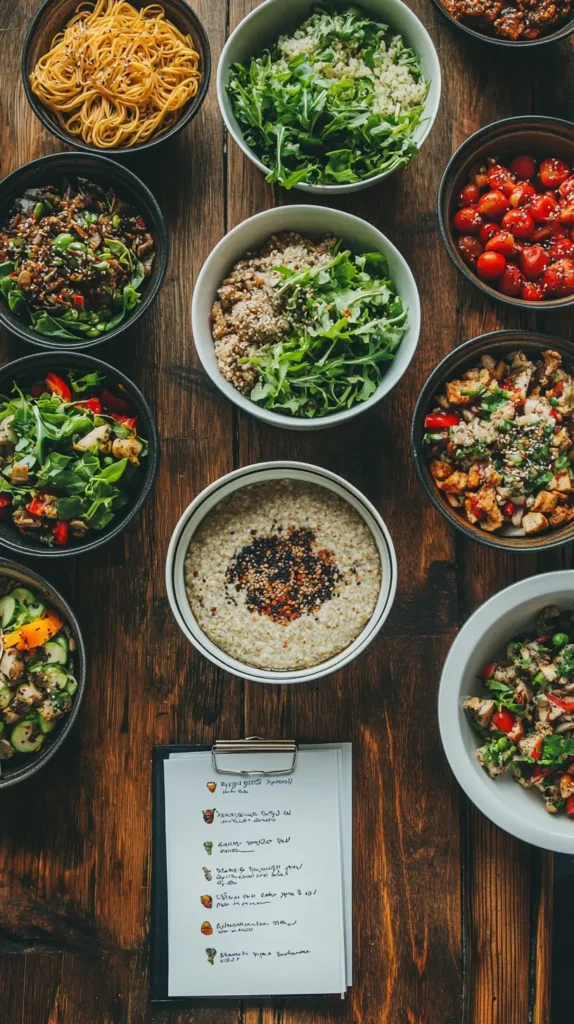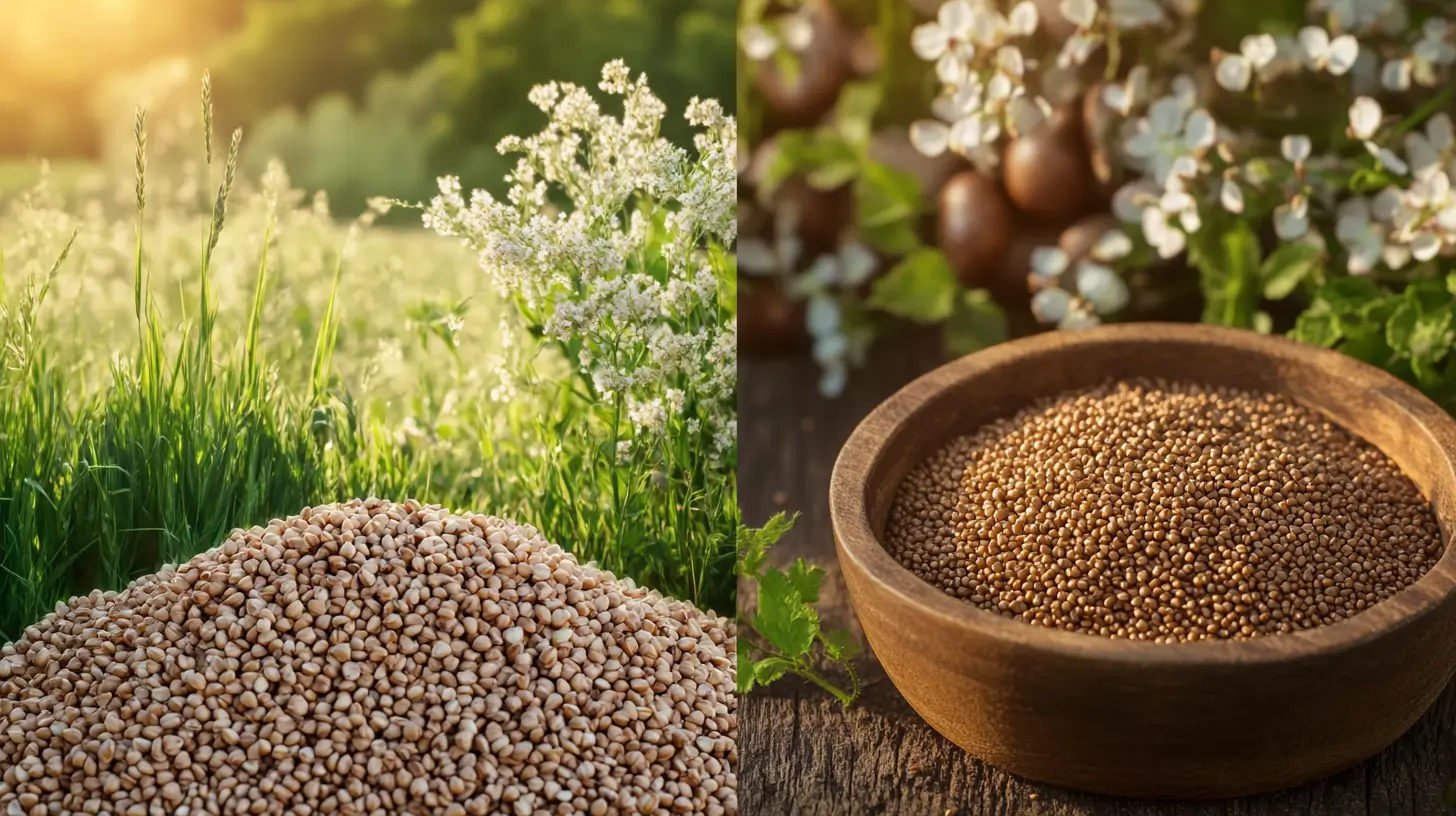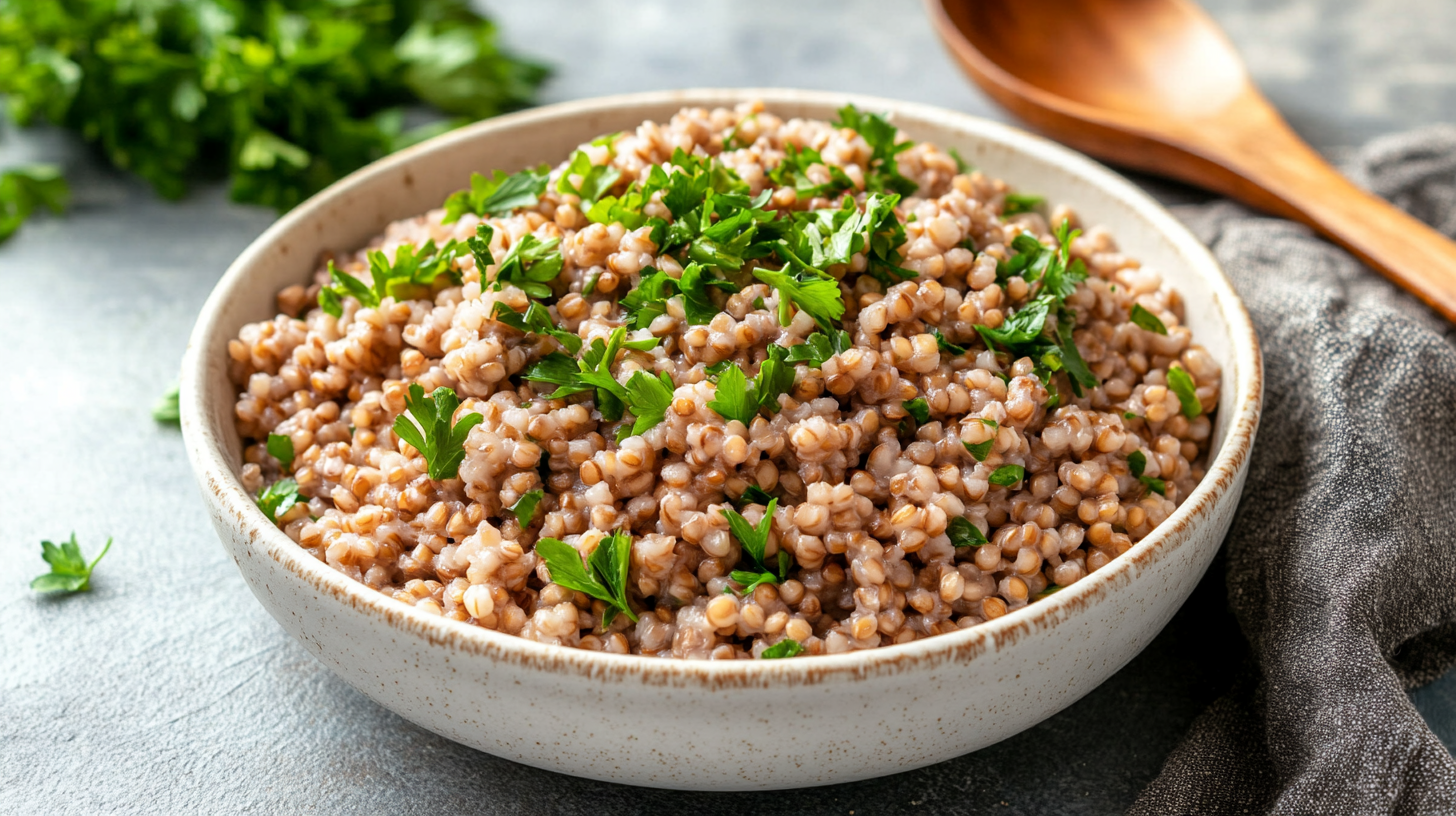When it comes to weight management, choosing the right foods is critical. Among the many healthy options available, buckwheat stands out as a nutrient-packed ingredient that can aid weight loss significantly.Moreover, this article will walk you through how to make buckwheat for weight loss and explain why it’s a valuable addition to your diet.
What Is Buckwheat?
Buckwheat is a pseudocereal, meaning it isn’t a true grain but functions similarly in cooking and nutrition. Originating in Asia and Eastern Europe, buckwheat has been a dietary staple for centuries. In addition, its nutty flavor and versatility make it a favorite ingredient enjoyed worldwide.
Nutritional Profile of Buckwheat
- Rich in fiber: Promotes satiety and aids digestion.
- High-quality protein: Contains all nine essential amino acids.
- Low glycemic index: Helps maintain stable blood sugar levels.
Adding buckwheat to your meals not only supports weight loss but also provides essential nutrients for overall health.
Why Is Buckwheat Ideal for Weight Loss?
Buckwheat is a weight-loss-friendly ingredient due to its unique combination of nutrients that support a balanced diet. Here’s why:
- High Fiber Content
Fiber promotes fullness, thereby helping reduce overeating. For instance, a single cup of cooked buckwheat contains nearly 4 grams of fiber, which aids digestion and further helps keep hunger pangs at bay. - Low Glycemic Index
Foods with a low glycemic index release sugar slowly into the bloodstream, thereby preventing insulin spikes. As a result, this ensures sustained energy levels and also minimizes fat storage. - Protein-Rich Composition
Protein is essential for muscle maintenance and satiety. In fact, buckwheat’s protein content rivals that of quinoa, which makes it an excellent choice for both vegetarians and vegans.
When learning how to make buckwheat for weight loss, understanding these nutritional advantages is crucial to achieving your health goals.
Nutritional Benefits of Buckwheat
Buckwheat’s benefits go beyond weight management. Here’s an overview of its impressive nutritional value:
- Vitamins and Minerals:
Buckwheat is rich in magnesium, manganese, and B vitamins, all of which support metabolism and energy production. - Antioxidants:
Rutin, quercetin, and other antioxidants in buckwheat combat inflammation and oxidative stress. - Calorie Content:
A cup of cooked buckwheat has about 155 calories, offering a nutrient-dense option for calorie-conscious individuals.
These attributes make buckwheat recipes both nutritious and delicious.
How to Choose the Best Buckwheat
Selecting the right type of buckwheat ensures optimal flavor, texture, and nutritional value.
Types of Buckwheat
- Groats: Whole kernels that retain their natural nutrients.
- Flour: Ground buckwheat ideal for pancakes, bread, and noodles.
- Noodles: Known as soba, these are a staple in Japanese cuisine.
Tips for Buying and Storing Buckwheat
- Organic Options: Opt for organic varieties to avoid pesticides and ensure better quality.
- Storage: Store buckwheat in airtight containers in a cool, dark place to maintain freshness.
Knowing how to select and store buckwheat will not only make it easier to prepare healthy meals but also support your weight-loss journey effectively.
Preparing Buckwheat for Cooking
Proper preparation is key to maximizing buckwheat’s benefits. Additionally, it ensures that its flavor and texture are both appealing and enjoyable.
Steps to Prepare Buckwheat
- Cleaning: Rinse thoroughly to remove impurities.
- Soaking: Soak buckwheat groats for 1–2 hours to reduce cooking time and enhance digestibility.
- Rinsing: After soaking, rinse again to remove any residual starch or dirt.
Following these steps ensures your buckwheat is clean, tender, and ready for various recipes.
Top Cooking Methods for Buckwheat
To master how to make buckwheat for weight loss, experiment with these versatile cooking methods:
- Boiling: The simplest method, ideal for groats. Use a 2:1 water-to-buckwheat ratio and cook until tender.
- Steaming: Retains nutrients and is perfect for salads or side dishes.
- Roasting: Enhances the nutty flavor, often used for breakfast porridge or granola.
- Baking: Combine buckwheat flour with other ingredients to create breads or crackers.
Each method unlocks a unique flavor profile, thereby making buckwheat a highly versatile ingredient.

Simple Buckwheat Recipes for Weight Loss
Incorporate these easy and delicious recipes into your routine so that you can enjoy the full benefits of buckwheat for weight loss.
1. Buckwheat Porridge
Ingredients:
- 1 cup buckwheat groats
- 2 cups almond milk
- 1 tsp cinnamon
- Fresh berries for topping
Steps:
- Cook the buckwheat in almond milk until soft.
- Add cinnamon and stir.
- Top with berries for a wholesome breakfast.
2. Buckwheat Salad
Ingredients:
- 1 cup boiled buckwheat
- 1 cucumber, diced
- 1 tomato, chopped
- Olive oil and lemon juice
Steps:
- Mix all ingredients in a bowl.
- Season with salt and pepper.
- Serve chilled.
3. Buckwheat Smoothie
Ingredients:
- 1/2 cup cooked buckwheat
- 1 banana
- 1 cup unsweetened yogurt
- Honey (optional)
Steps:
- Blend all ingredients until smooth.
- Enjoy as a nutrient-rich snack.
These recipes showcase how simple it is to make buckwheat for weight loss while keeping your meals delicious and satisfying.
Meal Prep with Buckwheat
Integrating buckwheat into weekly meal prep not only simplifies your weight-loss routine but also saves valuable time.
Tips for Weekly Meal Prep
- Cook in Batches: Prepare a large batch of boiled or steamed buckwheat to use in various dishes throughout the week.
- Store Properly: Divide cooked buckwheat into single servings and refrigerate for up to five days or freeze for longer storage.
- Versatile Uses: Use buckwheat in salads, stir-fries, or as a substitute for rice or pasta in meals.
Sample Meal Prep Ideas
- Breakfast: Buckwheat porridge with almond milk and fruits.
- Lunch: Buckwheat salad with cucumbers, tomatoes, and a lemon vinaigrette.
- Dinner: Stir-fried vegetables with buckwheat and grilled chicken.
Learning to meal prep with buckwheat ensures you always have a healthy, nutrient-rich option at hand.
Combining Buckwheat with Other Superfoods
To maximize its weight-loss potential, pair buckwheat with other nutrient-dense ingredients for balanced meals.
Best Pairings for Buckwheat
- Vegetables: Add leafy greens, bell peppers, or zucchini for fiber and vitamins.
- Lean Proteins: Pair with grilled chicken, tofu, or eggs to create a complete protein-rich meal.
- Healthy Fats: Incorporate avocado, olive oil, or nuts for satiety and flavor.
Benefits of Superfood Combinations
- Enhanced nutrient profile for better energy and digestion.
- Synergistic effects, such as combining protein and fiber for longer-lasting fullness.
- A variety of flavors and textures to keep meals enjoyable.
By pairing buckwheat with these superfoods, you’ll elevate your meals to be both satisfying and weight-loss-friendly.
Buckwheat-Based Diet Plans
A structured meal plan can effectively guide your weight-loss journey while ensuring your nutrition stays on track. For this reason, below is a sample 7-day plan specifically centered around how to make buckwheat for weight loss.
Sample 7-Day Meal Plan
| Day | Breakfast | Lunch | Dinner |
|---|---|---|---|
| Day 1 | Buckwheat porridge with nuts | Buckwheat salad with veggies | Grilled fish with buckwheat |
| Day 2 | Smoothie with buckwheat | Stir-fried tofu with buckwheat | Roasted chicken and buckwheat |
| Day 3 | Buckwheat pancakes | Lentil soup with buckwheat | Steamed buckwheat with veggies |
| Day 4 | Yogurt with buckwheat | Buckwheat and quinoa salad | Soba noodles with shrimp |
| Day 5 | Banana buckwheat smoothie | Grilled turkey and buckwheat | Buckwheat-stuffed bell peppers |
| Day 6 | Buckwheat granola | Chickpea and buckwheat salad | Pan-seared salmon with buckwheat |
| Day 7 | Chia pudding with buckwheat | Roasted veggie and buckwheat bowl | Vegetable curry with buckwheat |
This plan demonstrates how versatile buckwheat is, allowing you to create nutrient-dense meals every day.

Common Mistakes to Avoid
Even with its simplicity, cooking and using buckwheat can go wrong. Here’s what to avoid when learning how to make buckwheat for weight loss.
Mistakes to Watch Out For
- Overcooking: Overcooked buckwheat turns mushy and loses its appealing texture. Cook just until tender.
- Under-Seasoning: Buckwheat has a mild flavor that benefits from herbs, spices, or dressings.
- Ignoring Portion Control: While nutrient-dense, eating large portions can increase calorie intake.
Solutions
- Follow precise cooking times and water ratios.
- Use flavorful ingredients like garlic, onions, or lemon to enhance taste.
- Measure servings to stay within calorie goals.
Avoiding these mistakes ensures that your buckwheat dishes are both delicious and effective for weight management.
Scientific Backing
Research underscores buckwheat’s role in supporting weight loss and improving overall health.
Key Findings
- High Fiber Content: A study published in the Journal of Nutrition highlights how fiber-rich diets promote satiety and reduce calorie intake.
- Low Glycemic Index: Research from the American Journal of Clinical Nutrition shows that low-GI foods like buckwheat stabilize blood sugar, reducing cravings.
- Rich in Protein: Studies confirm that buckwheat’s complete protein content helps preserve muscle mass while losing fat.
These scientific findings reinforce the benefits of incorporating buckwheat into your diet for effective weight management.
FAQs About Buckwheat for Weight Loss
How do you eat buckwheat for weight loss?
To eat buckwheat for weight loss, start by incorporating it into your meals as a nutritious, low-calorie option. For example, begin your day with buckwheat porridge topped with fresh fruits and nuts, which helps boost satiety and curb cravings. Additionally, for lunch or dinner, you can add boiled buckwheat to salads or use it as a side dish paired with lean proteins like chicken or tofu, ensuring a balanced and satisfying meal. Buckwheat flour can also replace refined grains in recipes for pancakes, bread, or noodles. Focus on portion control and balance your meals with vegetables and healthy fats to maximize weight-loss benefits.
What is the best way to eat buckwheat?
The best way to eat buckwheat for weight loss is to cook it in its whole form, such as groats or steamed kernels, as these retain the most nutrients and fiber. Boiling or steaming are ideal methods because they require no added fats. Pairing buckwheat with vegetables and proteins enhances its nutritional value, making it a complete, balanced meal. Alternatively, buckwheat flour can be used to prepare healthy baked goods or soba noodles, offering variety in your diet while supporting weight management.
What happens if I eat buckwheat every day?
Eating buckwheat daily can provide numerous health benefits, including improved digestion, stable blood sugar levels, and enhanced energy due to its rich fiber, protein, and nutrient content. However, consuming it excessively without varying your diet may lead to nutrient imbalances or a monotonous meal plan. To avoid this, rotate buckwheat with other whole grains or pseudocereals like quinoa or millet. For individuals with buckwheat allergies, daily consumption may trigger symptoms, so it’s essential to monitor your body’s response.
Who should not eat buckwheat?
While buckwheat is safe for most people, it may not be suitable for everyone:
- Allergies: Individuals allergic to buckwheat should avoid it, as reactions can range from mild itching to severe anaphylaxis.
- Kidney Disorders: Buckwheat contains oxalates, which might exacerbate kidney stones or related conditions in susceptible individuals.
- Low-Carb Diets: Those on strict ketogenic or low-carb diets should moderate buckwheat intake due to its carbohydrate content.
- Digestive Sensitivities: If you have a sensitive stomach, start with small portions to ensure it’s well-tolerated.
Consult a healthcare provider if you have any concerns about including buckwheat in your diet.
Conclusion
Buckwheat is more than just a nutritious food; it’s a powerful ally in your weight-loss journey. By incorporating buckwheat into your weekly meal prep, pairing it with other superfoods, and following structured diet plans, you can enjoy its many benefits while staying on track with your health goals. Avoiding common mistakes is crucial, and furthermore, relying on scientific backing can help you feel confident in your decision to include buckwheat in your diet.
Now that you know how to make buckwheat for weight loss, it’s time to put these tips into practice and transform your meals into wholesome, satisfying, and health-promoting dishes.





